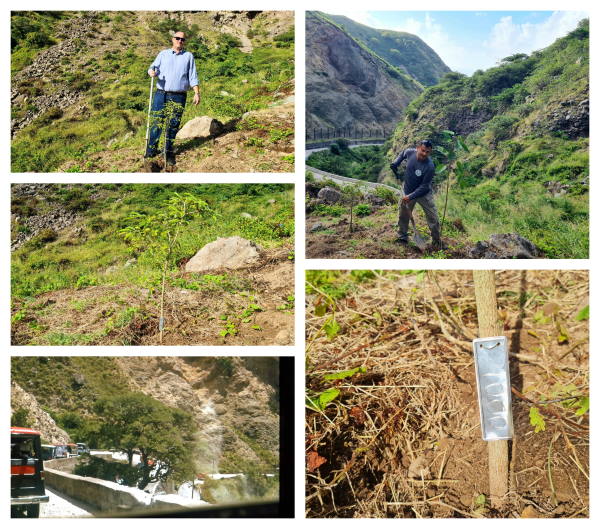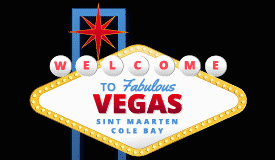 SABA:--- Yesterday marked a pivotal moment in the Public Entity Saba’s reforestation project when the first tree saplings were outplanted at its first reforestation site at the S Corner along Fort Bay Road.
SABA:--- Yesterday marked a pivotal moment in the Public Entity Saba’s reforestation project when the first tree saplings were outplanted at its first reforestation site at the S Corner along Fort Bay Road.
Commissioner Bruce Zagers planted the first sapling as a portfolio holder for this project. Commissioner Zagers is also credited with first proposing that Saba have a reforestation project as part of the Nature & Environment Policy Plan (NEPP). The NEPP aims to ensure sound management of the natural environment that facilitates the responsible and sustainable use of Saba’s natural resources (as well as those on Bonaire and St. Eustatius).
The first tree sapling planted was a tamarind. Tamarind is native to tropical Africa, but these trees have become naturalized over time on Saba after having been first introduced to the Caribbean region in the early 1600s. This particular tree species was chosen as the first to be planted because of the historical connection it has to the S Corner. In the past, a big tamarind tree used to grow at the S Corner. The tree was captured in a photograph sourced from local historian and former politician Will Johnson, who posted it to his social media. The tamarind sapling was planted in place of the big tamarind tree that no longer exists to help bring this tree species back to the area.
The sapling was physically tagged with the number 0001 to represent the first of the 5,000 trees that will be planted in the reforestation project. This tree, along with all others that will be outplayed, will be geolocated and entered into a digital database for record-keeping and monitoring purposes. A total of 22 saplings – some of which included mango, genip, West Indian mahogany, and small-leaf fig – were outplanted. The saplings were planted higher up along the road to ensure that drivers are still able to see oncoming traffic from down the road and are still able to stop in time. More saplings will be planted at this site in the available space.
This site was specifically chosen for the high level of erosion in the area. The main goal of reforestation is to address the land-based pressures of erosion and runoff, which negatively impact the health of the coral reef ecosystems that surround Saba, in order to improve both marine and terrestrial biodiversity. During periods of heavy rainfall, rainwater flows down the hillsides that surround The Bottom into the streets, where it accumulates and is channeled into the main ghaut that leads to Fort Bay Harbor. This rainwater flows as runoff in the gulley along Fort Bay Road, further eroding and destabilizing the embankments as it collects rocks and topsoil, which are eventually deposited into the harbor. The saplings that have been planted are a nature-based solution to address the erosion in this area. The idea is that over time, as these saplings mature, their root systems will grow deep into the soil, helping to hold it in place and, ultimately, helping to reduce erosion.












